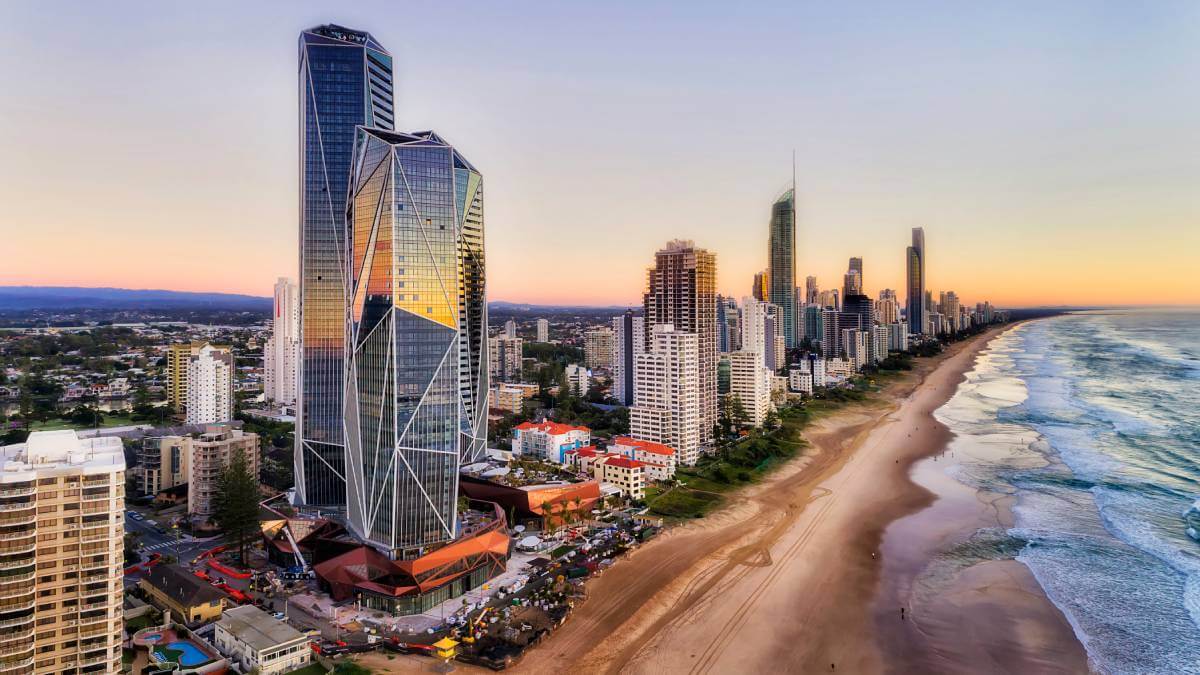Australians are retiring later in life, and Queensland is the top destination for those seeking a new adventure in their golden years, according to data from the Australian Bureau of Statistics (ABS).
The sunshine state has seen a boom in the general population and the population of retirees over the last few years.
Let’s take a look at the numbers.
So, why are people retiring to Queensland?
As the fastest-growing state in the country, Queensland’s population numbers have been boosted by older Australians becoming banana benders.
“Since COVID, we’ve seen a rebalancing of our population away from the southern states and the capital cities that were dominant like Sydney and Melbourne, and to the regional areas, particularly to Queensland,” social researcher and demographer Mark McCrindle said.
The number of retirees in Queensland has risen by more than 76,000 between the 2018-19 and 2020-21 financial years – the largest increase in the country.
Mr McCrindle said Queensland had long attracted retirees, but since the pandemic, many people are making the move earlier in life.
“The number of Queenslanders aged over 80 has increased by 50 per cent,” he said.
“So, it does highlight not only that people are living longer but that more older Australians are moving to Queensland.”
‘Longevity boom’
Mr McCrindle said that while cost of living is a factor for people retiring later in life, it’s also driven by people wanting to be at work.
He said work offers people social connections, upskilling opportunities and the ability to make a contribution later in life.
“People are still retiring fairly young, in that traditional age, in the mining sector – in their early 60s –and it’s true in a lot of the construction and building and trade areas,” he said.
“But in the knowledge economy sectors, people tend to retire a lot later — in fact, late 60s or beyond.”
Mr McCrindle said he suspected the average retirement age would continue to be pushed back as society progressed more into the knowledge economy.
The latest ABS data shows a clear trend towards older Australians leaving the workforce later – which experts say is good news.
Mr McCrindle calls the phenomenon a “longevity boom”.
“The value of a worker actually grows with age because their contacts, their experience and their knowledge grows,” he said.
How does gender affect retirement?
The majority of retirees are women, a trend that Mr McCrindle said had always been the case.
“While the average age of retirement for both genders is moving up, women are still retiring significantly earlier,” he said.
The latest data shows that women make up 56 per cent of the retired population.
On average women are twice as likely as men to leave the workforce to care for loved ones who are ill, people with disabilities or older people, according to ABS data.
How has COVID impacted retirement?
Mr McCrindle said that since the pandemic, employees had become more aware of the possibility of self-employment, which resulted in some leaving the workforce earlier.
However, as a whole, Australians are living and working longer.
As of 2021, one in 10 people retired at 70 or older.
Mr McCrindle said it’s likely this will soon become the norm.
“We’d expect that number really to multiply several-fold over the decades ahead,” he said.
The agriculture, forestry and fishing industries have the oldest employees with an average retirement age of 67.8.
In comparison, those working in the information media and telecommunications sector are leaving the workforce almost six years earlier, with the average employee retiring at just 62.1 years of age.
Mr McCrindle said this may be due to the rise of the gig economy.
He said those leaving the telecommunications sector may not be leaving the workforce entirely, but rather picking up earnings on the side.
“The world has opened up for people, they know they don’t have to stay in a job forever,” Mr McCrindle said.
Warning against ‘rushing to retire’
Retirement Living Council executive director Daniel Gannon said the rising number of retirees will add further pressure to the “housing supply shortage” and the “already struggling residential aged care sector”.
“The number of Australians aged over 65 is projected to grow by around 50 per cent by 2041, meaning demand for seniors and retirement accommodation will increase significantly over the next two decades,” he said
“A lot of people want to remain close to family, friends and social connections, meaning local housing options are crucial.”
Mr Gannon said many Australians wish to retire “as early as possible” but don’t have enough savings or superannuation for a comfortable retirement.
He said more needs to be done to support “this new, more active generation of older Australians as they head into retirement”.
“Retirement villages enable older Australians to live longer and happier lives, maintaining their independence and lifestyle while still accessing care and support services,” Mr Gannon said.
“Importantly, they are designed to provide an affordable option for older Australians, with entry prices on average 48 per cent lower than median house prices in similar areas.”
He said increasing the supply of retirement villages would also be “incentivising more older Australians to rightsize as the country struggles through a housing crisis”.
 2020 Australian Broadcasting Corporation. All rights reserved.
2020 Australian Broadcasting Corporation. All rights reserved.
ABC Content Disclaimer


these blue figures are really hard to read on this black background